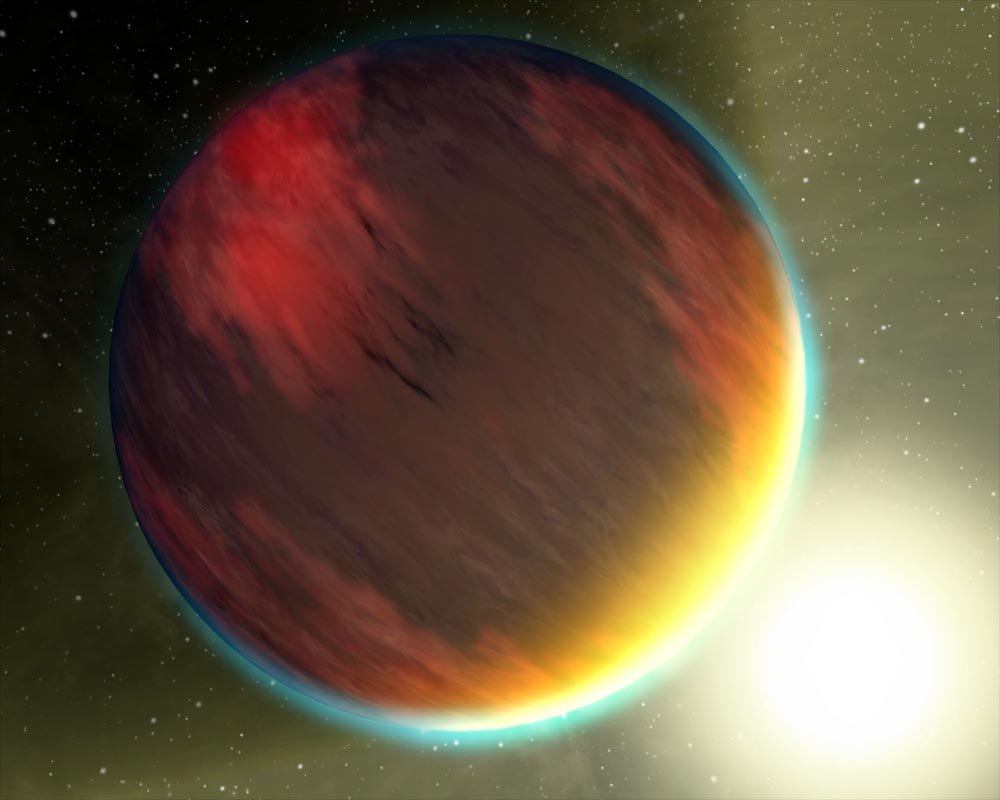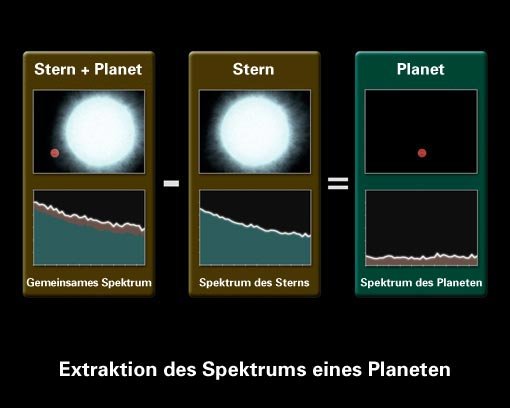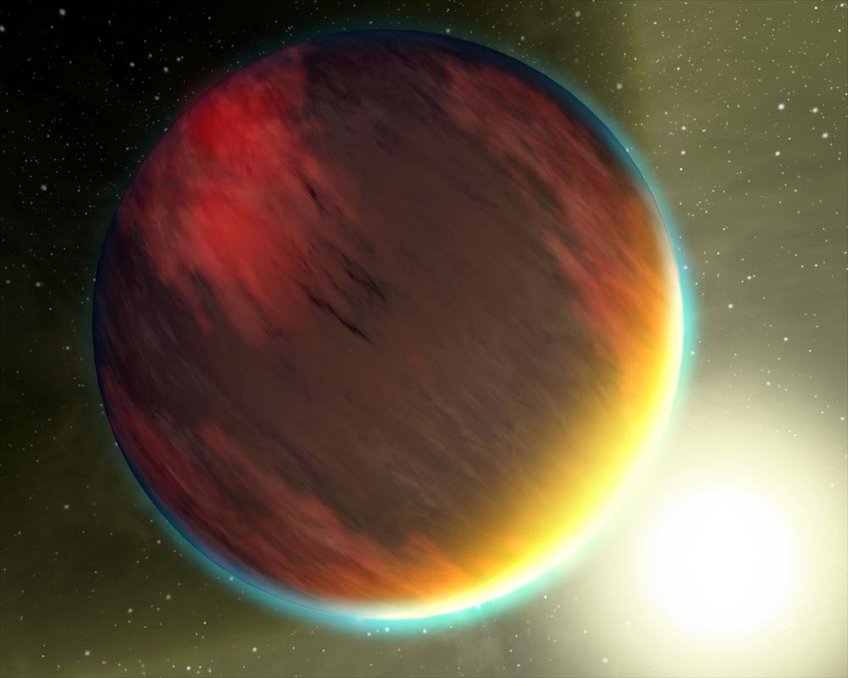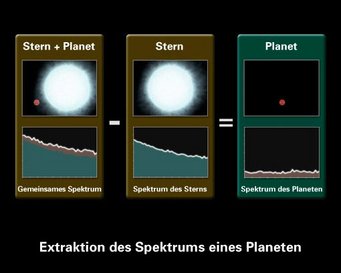The first spectrum of an extra-solar planet
An international colaboration, with participation of the Max Planck Institute for Astronomy in Heidelberg, using NASA's SPITZER Space Telescope, have achieved, for the first time ever, to take a spectrum from an exoplanet.(1)
A spectrum is created when an instrument called a spectrograph splits light from an object into its different wavelengths, just as a prism turns sunlight into a rainbow. The resulting pattern of light, the spectrum, reveals »fingerprints« of chemicals making up the object.
Until now, the only planets for which spectra were available belonged in our own solar system. The spectrum of extra-solar planet reported here is a landmark achievement which marks the first steps towards reveiling the atmospheric composition and structure of planets outside the solar system.
The observed planet, named HD 209458b, is a so-called »hot Jupiter«. Such planets are, like Jupiter, made of gas, but they orbit much closer to their sun. The planet HD 209458b orbits a star so far away, that it is too faint to be seen with the naked eye. At a distance of 904 trillion miles, in the direction of the constellation Pegasus, it is about a million times farther away from us than Jupiter. SPITZER was able to tease out spectra from the feeble light of the planet through what is known as the »secondary eclipse« technique. In this method, a so-called transiting planet is monitored as it circles behind its star, temporarily disappearing from our Earthly point of view. By measuring the dip in infrared light that occurs when the planet disappears, SPITZER can learn how much light is coming at each of the observed wavelengths solely from the planet. The technique will work only in infrared wavelengths, where the planet is brighter than in visible wavelengths and stands out better next to the overwhelming glare of its star.
The data indicate that the planet is drier and cloudier than predicted. Theorists thought hot Jupiters would have lots of water in their atmospheres, but surprisingly none was found around HD 209458b. According to astronomers, the water might be present but buried under a thick blanket of high, waterless clouds posibly filled with dust, which is unlike anything seen around planets in our own solar system. In the future, astronomers hope to have spectra for smaller, rocky planets beyond our solar system. This would allow them to look for the footprints of life – the spectral signatures of molecules key to the existence of life, such as oxygen and possibly even chlorophyll.
In addition to the team led by Dr. Mark Swain of JPL, two other groups of astronomers used SPITZER to capture spectra of exoplanets. A team led by Dr. Carl Grillmair of NASA's SPITZER Science Center at the California Institute of Technology in Pasadena, California, observed HD 189733b, while a team led by Dr. Jeremy Richardson of NASA's Goddard Space Flight Center focused on the same planet in the Swain study, and came up with similar results. Swain's and Grillmair's results will be published in the Astrophysical Journal Letters. Ridgardson's findings will be published in Nature.
For further information see: http://www.SPITZER.caltech.edu/Media/releases/ssc2007-04/


(1) Team members are:
M.R. Swain (Jet Propulsion Laboratory, 4800 Oak Grove Drive, Pasadena, CA 91109)
J. Bouwman, Max Planck Institute for Astronomy, Königstuhl 17, D-69117 Heidelberg
R. Akeson, S. Lawler, and C. Beichman (Michelson Science Center, California Institute of Technology, MS 100-22, Pasadena, CA, 91125)

